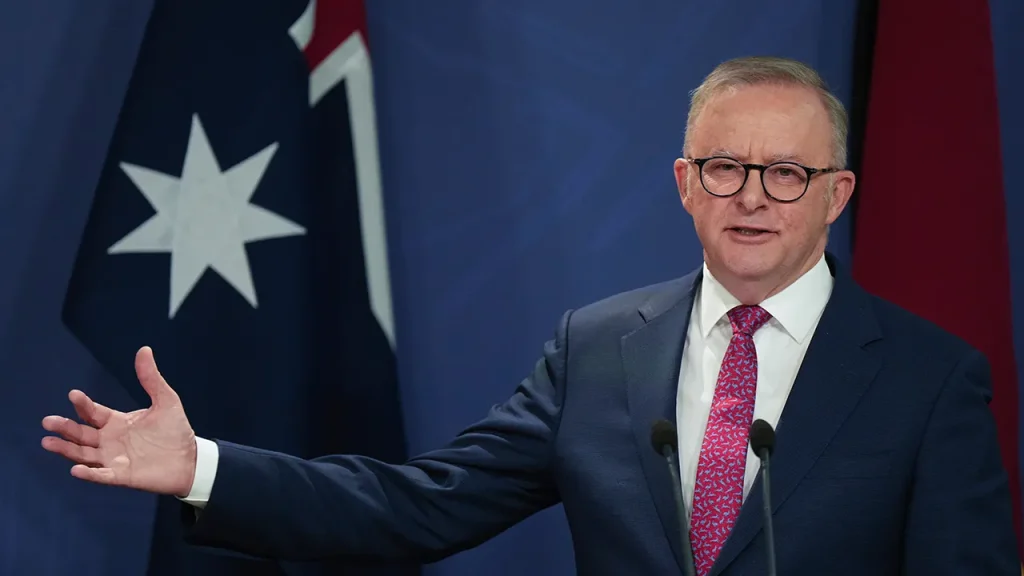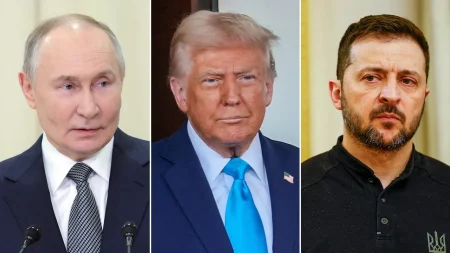Australian PM’s Plane Makes Emergency Landing Following Visit with Trump
In an unexpected turn of events following a successful diplomatic mission to Washington D.C., Australian Prime Minister Anthony Albanese’s return journey was dramatically interrupted when his plane was forced to make an emergency landing in Missouri. The Royal Australian Air Force KC-30A aircraft safely diverted to St. Louis Lambert International Airport Tuesday evening, approximately two and a half hours after departing from Joint Base Andrews. The emergency was prompted when a crew member suffered a concussion after being struck by luggage that reportedly fell from an overhead compartment. Defense officials, prioritizing the injured crew member’s welfare, requested privacy as medical attention was provided at a local hospital. The incident came as an abrupt conclusion to what had otherwise been a productive diplomatic visit centered around strengthening economic ties between the United States and Australia.
The emergency landing marked a dramatic end to Prime Minister Albanese’s visit to the United States, which had culminated in the signing of a significant critical minerals agreement with President Donald Trump at the White House just a day earlier. The timing of this deal is particularly notable as it comes during a period of increasing global competition over rare-earth resources, with China recently implementing stricter regulations on its own exports of these valuable minerals. The agreement, valued at approximately $8.5 billion, represents months of careful negotiation between the two longtime allies and focuses on securing supply chains for minerals essential to modern technology manufacturing, renewable energy development, and defense applications. Both leaders framed the agreement as a strategic win in an increasingly competitive global marketplace for these limited resources.
President Trump, in his characteristic style, spoke optimistically about the agreement’s potential impact, suggesting that within a year, the partnership would yield such abundant supplies of critical minerals and rare earths that “you won’t know what to do with them.” His hyperbolic claim that “they’ll be worth $2” underscored his administration’s focus on reducing dependence on Chinese supplies and creating alternative sources for these strategically important materials. The deal reflects growing concerns among Western nations about China’s dominance in the critical minerals sector, which provides essential components for everything from smartphones and electric vehicles to military equipment and green energy technologies. By partnering with Australia, which possesses significant untapped mineral resources, the United States aims to secure more reliable supply chains for these materials.
Prime Minister Albanese echoed the significance of the agreement, describing it as taking the U.S.-Australia relationship “to the next level.” This characterization reflects the dual nature of the partnership, which serves both economic and strategic purposes in an increasingly complex geopolitical landscape. Australia, with its vast natural resources and stable democratic government, represents an ideal partner for the United States as it seeks to reduce reliance on Chinese supplies of critical minerals. For Australia, the agreement provides opportunities for economic development and strengthens its position in global supply chains. The timing of the deal is particularly significant as both countries look to position themselves advantageously in a global economy increasingly shaped by technological competition and resource security concerns.
The critical minerals agreement comes amid broader tensions between the United States and China, with President Trump threatening “massive” tariffs on Chinese goods and expressing no interest in meeting with Chinese President Xi Jinping. The Trump administration has characterized China’s control over rare earth minerals as a “global power grab” and indicated willingness to impose significant economic penalties in response. This context makes the U.S.-Australia agreement particularly valuable as a strategic alternative to Chinese supply chains. The minerals covered under the agreement are essential components in high-technology products, renewable energy systems, and defense technologies, making them crucial to both countries’ economic and national security interests. By securing alternative sources for these materials, both nations hope to reduce vulnerability to potential supply disruptions or price manipulations.
As Prime Minister Albanese recovers from the unexpected detour in his return journey, the incident serves as a reminder of the unpredictable nature of international diplomacy and travel. However, the temporary setback does little to diminish the significance of the diplomatic achievement represented by the critical minerals agreement. This partnership between the United States and Australia stands as an important step in reshaping global supply chains for strategically important resources in an era of increasing competition. As both nations work to implement the agreement, the world will be watching to see if this alliance can effectively challenge China’s current dominance in the critical minerals sector and create more resilient supply networks for the technologies that increasingly define modern economic and military power. Despite the dramatic conclusion to the Prime Minister’s visit, the foundation has been laid for what both leaders clearly view as a transformative economic partnership.














